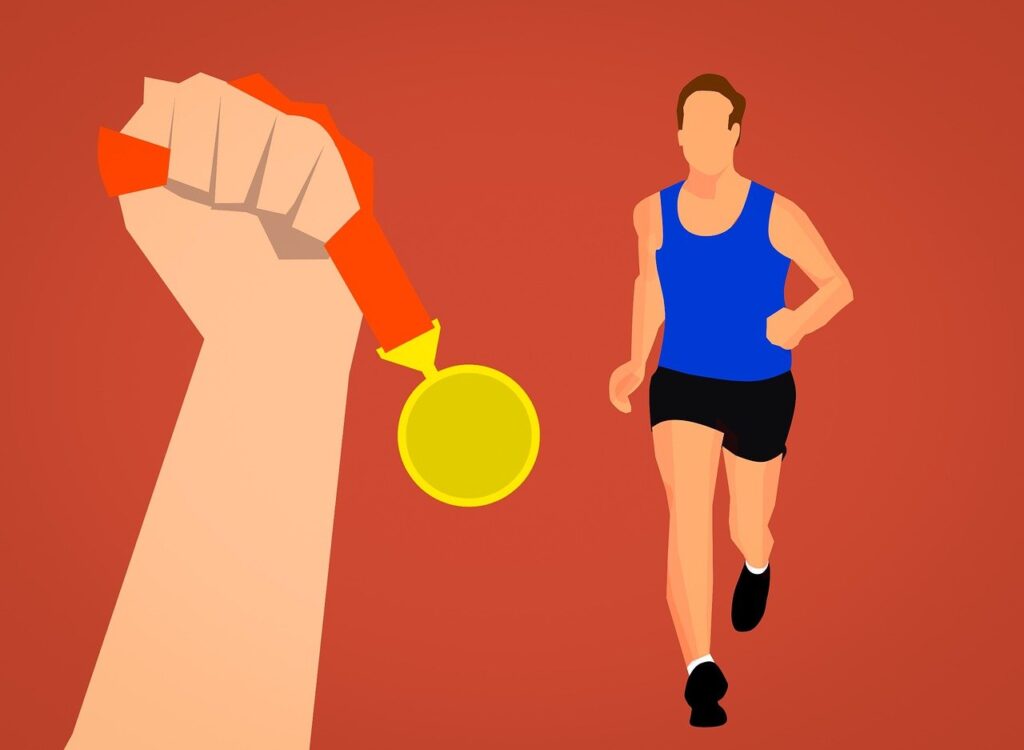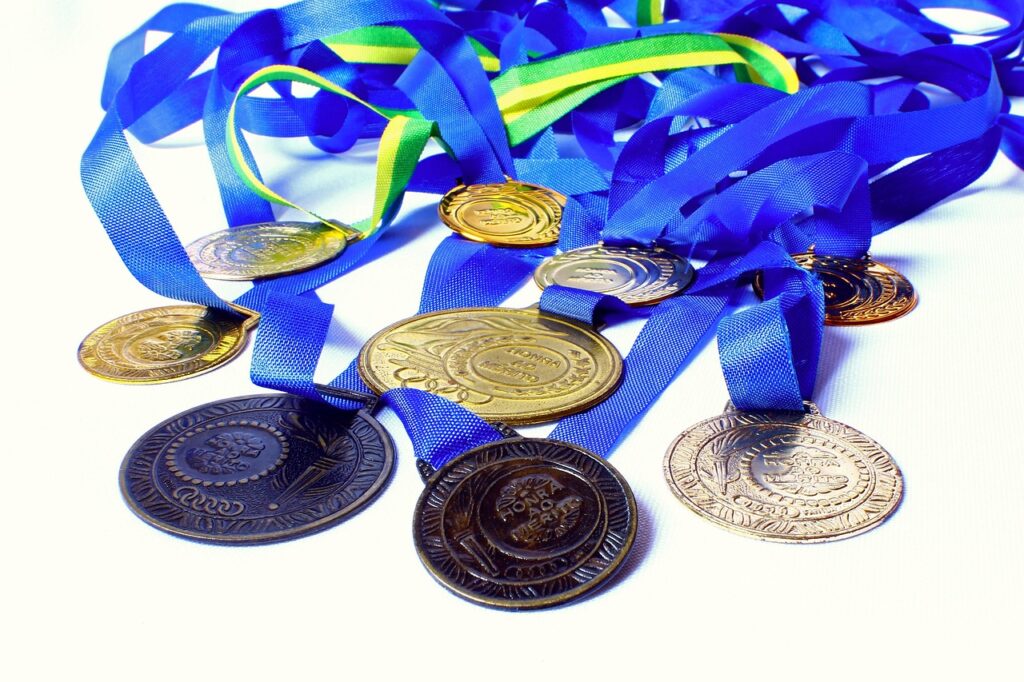
The world of athletics recently mourned the passing of Otis Crandall Davis, a towering figure whose life story embodied perseverance, exceptional talent, and a quiet dignity that defied the racial prejudices of his era. Davis, a two-time gold medalist at the 1960 Summer Olympics, died on September 14, 2024, at the age of 92, leaving behind a legacy that transcends his groundbreaking achievements on the track.
His passing marks the end of an extraordinary life that saw him rise from segregated Alabama to the pinnacle of international sport. Davis’s journey was not merely about winning races; it was about challenging expectations, overcoming systemic barriers, and demonstrating that true greatness is measured not just in medals, but in the spirit with which one confronts life’s myriad obstacles. His story, marked by pivotal moments and quiet triumphs, continues to inspire.
This article delves into the remarkable life and career of Otis Davis, chronicling his improbable path to Olympic glory and the profound impact he made. We will explore the key turning points that shaped him, from his humble beginnings and military service to his serendipitous discovery of track and field, culminating in those unforgettable days in Rome where he etched his name into the annals of Olympic history, breaking records and barriers alike.
1. **Early Life and Segregated Alabama**Otis Crandall Davis was born on July 12, 1932, in Tuscaloosa, Alabama, a place and time deeply marked by racial segregation. His early years were shaped by the realities of Jim Crow-era South, where opportunities were limited by the color of one’s skin. His father, Johnie Davis, worked as a bellhop, while his mother, Mary Alice Davis, contributed to the family as a science teacher and movie theater cashier.
Raised primarily by his maternal grandmother, Carrie Eaton, Davis experienced firsthand the injustices of a divided society. The stark reality of segregation was ever-present; he recalled attending an all-Black school more than a mile from his home, even though an all-white high school stood just a block away. Such experiences undoubtedly forged a resilience and determination within him, shaping his perspective on the world and his place within it. He even once witnessed Ku Klux Klansmen march in Tuscaloosa, recalling his sadness at seeing children among them.
His upbringing instilled in him a quiet strength, a characteristic that would define his approach to both athletic competition and life’s challenges. The environment he grew up in, a world where systemic racism dictated daily life, became a powerful, albeit unspoken, motivator. As he later reflected, he was “working against all of that bitterness and the hatred and the second-class citizenship,” seeing his athletic pursuits as a way of running away from those “negative stuff.”
Read more about: Busted! 12 ‘True Story’ Movies Where Hollywood Completely Rewrote History

2. **Military Service and College Basketball**Before his athletic career took an unexpected turn, Davis dedicated four years of his life to serving his country. He joined the United States Air Force during the Korean War, a period of service that took him to both England and various locations within the United States. This time in the military undoubtedly contributed to his discipline, focus, and unwavering resolve, qualities that would later prove invaluable on the track.
Following his distinguished military service, Davis embarked on his collegiate journey, initially enrolling at Los Angeles City College where he focused on basketball. His talent on the court earned him a basketball scholarship to the University of Oregon, where he transferred in 1957. While his time on the Oregon basketball team saw him playing sparingly in his single season, it was during this period that the seeds of his future greatness began to sprout in an entirely different sport.
This transition from military service to collegiate basketball highlights a period of exploration and development in Davis’s life. Though basketball was his initial focus, the experiences gleaned during these years—the discipline from the Air Force, the camaraderie of team sports—created a fertile ground for the extraordinary transformation that was about to unfold, leading him down an entirely unforeseen path to athletic stardom.
Read more about: Beyond the Headlines: 12 Celebrities Making a Real Impact for Critical Causes You Need to Know

3. **Discovery of Track and Field under Bill Bowerman**The pivotal moment in Otis Davis’s athletic life occurred in 1958 at the University of Oregon. While observing athletes running on the track with a friend, Davis, who had never run competitively before and whose youth sports experience was limited to basketball and football, felt an instinctive conviction: he believed he could beat the runners he was watching. This audacious thought led him to approach the legendary track coach Bill Bowerman.
Bowerman, who would later co-found Nike, Inc., was initially seeking high jumpers. Davis, ever adaptable, tried his hand at the event. In his first attempts, without any formal training or technique, he remarkably jumped 6’0″. He recounted, “I had no form. I had no style. I just jumped.” He also demonstrated natural aptitude in the long jump, hitting 23’0″ with minimal effort, despite his initial unfamiliarity with sprinting mechanics, admitting, “I didn’t even know how to get in the starting blocks.”
Recognizing Davis’s raw, untrained potential, Bowerman entered him in the 220-yard and 440-yard dashes at the Pacific Coast Conference championships. Davis won both, narrowly missing a school record in the latter. This marked the true beginning of his sprinting career, a journey guided by Bowerman’s insightful coaching and Davis’s innate athletic prowess, setting him on an improbable course toward becoming a world-class athlete in a sport he had only just discovered.

4. **The “First Nike Shoes” Controversy**Beyond his athletic achievements, Otis Davis holds a unique, albeit disputed, place in sports history concerning the origins of Nike. According to Davis’s own account, Bill Bowerman, his coach, made the very first pair of Nike shoes specifically for him. This claim directly contradicts the widely accepted narrative that the pioneering shoes were created for Phil Knight, Bowerman’s co-founder in Nike.
Davis vividly recalled the experience, stating, “I told Tom Brokaw that I was the first. I don’t care what all the billionaires say. Bill Bowerman made the first pair of shoes for me.” He remembered seeing Bowerman craft them from a waffle iron, emphasizing, “and they were mine.” However, Davis was not entirely fond of their initial design, noting, “I didn’t like the way they felt on my feet. There was no support and they were too tight.”
This fascinating anecdote, while not universally accepted, offers a glimpse into Bowerman’s innovative spirit and his dedication to his athletes, experimenting with footwear to enhance performance. Regardless of whose feet first graced the experimental designs, Davis’s account underscores the close, experimental relationship between athlete and coach during a transformative period in athletic gear development, adding another intriguing layer to his already compelling life story.

5. **Road to the 1960 Olympics: Trials and Preparation**Having transitioned rapidly from a basketball player to a burgeoning track star, Otis Davis quickly began competing at a national level for the Oregon Ducks. By the time the 1960 Olympic year arrived, he was poised to become a national AAU champion in the 440-yard run, a testament to his swift development under Bowerman’s guidance.
At the relatively advanced age of 28 for an Olympic sprinter, Davis successfully made the 1960 United States Olympic team. He secured his spot by placing third in the 400-meter race at the fiercely competitive Olympic Trials. Just one week before the Summer Olympics in Rome, he clocked his fastest time to date, indicating his readiness for the global stage. His age earned him the affectionate nickname “Pops” among his younger teammates, highlighting his unique position on the squad.
Davis confessed that despite his rapid ascent, he was still refining his craft on the eve of the Games. He remembered, “I was still learning how to turn with the staggered starts and all. I was still learning the strategy involved. I was still learning how to run in the lanes.” This humility and continuous learning attitude, even at the precipice of Olympic glory, underscore the remarkable nature of his journey and his dedication to mastering a sport he had so recently embraced.
6. **The Historic 400m Olympic Gold Medal Race**September 6, 1960, marked a defining moment in Otis Davis’s career and Olympic history. In the 400-meter final at the Rome Summer Olympics, he faced off against the heavily favored German athlete Carl Kaufmann, a Brooklyn-born runner who held the world record in the event. Davis’s race began with a slow start, but he accelerated with sudden force around the halfway mark, taking a significant lead that stretched to seven yards.
As the final 100 meters approached, Kaufmann, known for his powerful finish, began to close the gap rapidly. The dramatic climax saw both athletes lean desperately for the finish line. Davis ran upright, what he called “swayback,” with his hands in front, while Kaufmann leaned far forward, head low, as if diving. The result was a legendary photo finish that would be studied and discussed by track and field officials for years.
Both men crossed the line with a hand-timed 44.9 seconds, a new world record and the first time anyone had broken the heralded 45-second barrier. The photo finish, however, famously showed Kaufmann’s nose ahead but his torso behind Davis. Davis was awarded the win, with his auto-time recorded at 45.07 seconds, just one-hundredth of a second ahead of Kaufmann’s 45.08. “I knew I had won,” Davis later stated, “They were the only ones that didn’t know … those up there in the booth.”

7. **Anchoring the 4x400m Relay to Gold**Just two days after his thrilling victory in the 400-meter individual event, Otis Davis returned to the Olympic track for the 4 x 400 meter relay final. He was slated to run the anchor leg for the United States team, an integral role that would put him in a direct rematch with his German rival, Carl Kaufmann. His teammates, Jack Yerman, Earl Young, and 400-meter hurdles gold medalist Glenn Davis, each contributed to building a strong position for the final exchange.
Jack Yerman took an early lead over Germany, which was then extended slightly by Earl Young. By the time Glenn Davis handed the baton to Otis Davis, the American team had established a four-yard advantage. With Kaufmann once again chasing him, Otis Davis employed a shrewd strategy to maintain and extend their lead. He accelerated and then “floated,” forcing Kaufmann to expend energy to catch up, only to accelerate again.
This tactical brilliance allowed the American team to secure their second gold medal, setting another world record with a time of 3 minutes 2.2 seconds. The image of this dramatic finish, like his 400m individual race, was immortalized in Life magazine, further cementing his place in Olympic lore. Davis’s double gold medal performance, achieved in world-record fashion, crowned him as one of the most remarkable athletes of the 1960 Rome Games and a testament to his extraordinary talent and strategic prowess on the track.
8. **Transition from Olympic Champion to Dedicated Educator**Following his extraordinary double gold medal performance at the 1960 Rome Olympics, Otis Davis’s competitive running career largely concluded after a final successful season, which included defending his 400-meter title at the 1961 U.S. Nationals. Although he briefly entertained the idea of playing wide receiver for the Los Angeles Rams, his path ultimately led him away from professional sports and into the realm of education.
Davis chose to dedicate his post-athletic life to shaping young minds and fostering physical development. He returned to Oregon, where he spent many years as a high school teacher in Springfield. This period marked a significant shift, moving from the intense spotlight of international competition to the quieter, yet profoundly impactful, work of mentorship in academic settings.
His commitment to education also took him beyond the borders of the United States. Davis served overseas as an athletic director at various United States military bases, including a notable tenure at McGuire Air Force Base in New Jersey. In these roles, he applied the discipline and leadership honed during his military service and Olympic career to guide and inspire others in sports and physical activity, demonstrating a steadfast dedication to service and community.
Read more about: A Generational Reckoning: The Lives and Legacies of Icons Who Departed in a Single Year, Echoing Our Own Fleeting Youth
9. **A New Chapter in New Jersey: Community and Schools**In 1991, Otis Davis made a significant move to Jersey City, New Jersey, seeking to be closer to the vibrant cultural hub of New York. This relocation marked the beginning of a profound commitment to the local community, which would see him become an integral figure in the public school system, impacting countless lives beyond the track.
Around 2002 or 2003, Davis was hired by the Union City Board of Education. His role began at Emerson High School, where he served in multiple capacities: as a truancy officer, a teacher, a coach, and perhaps most importantly, as a mentor. His presence in the school hallways brought a quiet dignity and an invaluable wellspring of life experience, particularly for students navigating challenges in their own lives.
His remarkable achievements, though initially unknown to some of his new colleagues, soon came to light. In 2003, when Davis was inducted into the National Track and Field Hall of Fame, he invited Emerson Principal Robert Fazio to accompany him to the ceremony in Los Angeles. Upon learning of his Olympic medalist status, the school staff proudly honored him with a banner displayed in a hallway, recognizing his extraordinary accomplishments and the inspiration he brought to their institution.

10. **The Enduring Influence of a Mentor**Even as years passed since his Olympic triumphs, Otis Davis continued to be a guiding light for students. By 2012, he was serving as a verification officer at Union City High School, where his primary focus remained on mentoring young people, extending his impact far beyond the physical education classroom. His approach was characterized by a deep understanding of the struggles and aspirations of youth, drawing from his own experiences overcoming adversity.
Davis possessed a unique ability to connect with students, offering not just guidance on academic or behavioral matters, but also imparting valuable life lessons. He demonstrated through his own journey that dedication, perseverance, and a positive mindset could lead to success, regardless of one’s starting point or the obstacles encountered. His quiet wisdom and humble demeanor made him an approachable and highly respected figure within the school community.
For many students, particularly those from challenging backgrounds, Davis served as a living example of resilience. His presence underscored the idea that greatness could be achieved through hard work and determination, and that personal character was as important as any achievement. He was not just an Olympic legend; he was a daily source of encouragement, helping students navigate their paths and aspire to their own forms of success.
Read more about: Halle Berry at 58: Decoding the Bold Career Moves and Enduring Influence of a Hollywood Icon

11. **Leadership in the Olympic Alumni Community**Beyond his direct involvement in local schools, Otis Davis maintained a significant connection to the broader athletic community, particularly among his fellow Olympians. In 2012, he was recognized as the co-founder and president of the Tri-States Olympic Alumni Association, an organization dedicated to fostering camaraderie and ongoing engagement among former Olympic athletes in the New Jersey, New York, and Connecticut region.
His leadership in this association underscored his lifelong commitment to sports and the values it represents. It provided a platform for Olympians to stay connected, share their experiences, and contribute to their communities, often through outreach and inspirational programs. Davis, leveraging his own storied career, was a central figure in ensuring that the spirit of the Olympics continued to thrive beyond the competitive arena.
In addition to his role with the Tri-States Olympic Alumni Association, Davis’s remarkable achievements were widely acknowledged through various inductions. He was a proud member of the University of Oregon Hall of Fame, recognizing his collegiate athletic excellence, and was also honored by the New Jersey Sports Writers’ Halls of Fame. These accolades cemented his status not only as an Olympic hero but also as a significant figure in the sporting heritage of both his alma mater and his adopted state.

12. **Nurturing Youth Through Sports Programs**Otis Davis’s dedication to youth development extended beyond the traditional school day. During the spring and summer months, he actively directed athletic skills programs in Union City, New Jersey. These initiatives were specifically designed to engage students who might not typically participate in organized sporting events, ensuring that a broader segment of the community had access to the benefits of physical activity and teamwork.
One such program, the Mayor’s Cup, was first held on June 6, 2011. This event brought together students from various elementary schools across the city to compete in a range of track and field activities, including sprinting, spring relays, and circle relays. It provided a fun, inclusive environment for young athletes to test their abilities, develop sportsmanship, and experience the thrill of competition, all under the guidance of an Olympic champion.
Additionally, Davis championed the Sports Challenge, a vital program created to provide special needs children with unique opportunities to participate in sports activities. This initiative exemplified his profound belief in the power of sports to unite, empower, and enrich the lives of all children, regardless of their physical or developmental abilities. His tireless efforts in these community programs left an indelible mark on the lives of countless young individuals.
Read more about: Halle Berry at 58: Decoding the Bold Career Moves and Enduring Influence of a Hollywood Icon

13. **Chronicling a Life in “Destiny’s Daredevil”**In 2023, Otis Davis offered the world an intimate look into his remarkable journey with the publication of his memoir, “Destiny’s Daredevil: The Autobiography of an Olympic Champion Helping Others Cross the Finish Line.” This literary endeavor allowed him to share his personal narrative, reflections, and the invaluable lessons learned throughout a life defined by extraordinary challenges and triumphs.
Through its pages, the memoir provides a firsthand account of his experiences, from growing up in segregated Alabama and his military service to his unexpected ascent to Olympic glory and his subsequent dedication to education and mentorship. It serves not only as a historical record of his athletic feats but also as a testament to his resilient spirit and unwavering commitment to making a positive impact on others.
“Destiny’s Daredevil” offers readers profound insights into the psychological and emotional landscape of an athlete who continually pushed boundaries, both on and off the track. It illuminates his philosophy of helping others “cross the finish line” in life, encapsulating his identity not just as a champion, but as a dedicated humanitarian and an inspiring figure whose wisdom extended far beyond the realm of sports.
14. **Personal Life and the Return of Olympic Gold**Beyond his public achievements, Otis Davis navigated a personal life that included marriage and family. He was married to Lucille Mathes, a union that later ended in divorce. From this marriage, Davis had two daughters, Liza and Diana Davis, and was also a proud grandfather to a grandson. His family remained an important aspect of his life, providing a private anchor amidst his public endeavors.
A particularly harrowing personal incident occurred in early March 1994, when burglars broke into Davis’s apartment in the Heights neighborhood of Jersey City and stole his treasured gold medals. This theft, a cruel blow to a symbol of his life’s most significant achievements, deeply affected the community. Neighbors rallied in support, raising a banner on a nearby house that poignantly read, “Bring Home Otis Davis’ Gold,” a testament to the respect and affection he garnered.
Through concerted efforts by the police, his stolen medals were miraculously recovered and returned to him within approximately one month. Davis, reflecting on the timing of this joyous reunion, remarked to The Jersey Journal, “Things happened so fast, it was like magic. The timing couldn’t have been more perfect — Good Friday. Now I can have a Happy Easter.” This episode underscored the community’s reverence for him and the intrinsic value of his hard-won symbols of excellence.
Read more about: 14 V6 Sports Cars That Deliver V8-Level Performance: A Deep Dive for Automotive Enthusiasts
15. **A Lasting Legacy: Inspiration Beyond the Track**Otis Crandall Davis passed away on September 14, 2024, at the age of 92 in North Bergen, New Jersey, leaving an indelible mark on the world. His life story is a powerful testament to perseverance, resilience, and a quiet dignity that resonated far beyond his athletic achievements. He was not merely a two-time Olympic gold medalist; he was a symbol of triumph over systemic barriers and personal challenges.
His alma mater, the University of Oregon, honored him in 2020 as one of eight gold medalists who attended the institution, further cementing his place in collegiate sports history. More visibly, Davis, alongside legendary coach Bill Bowerman, and fellow track stars Ashton Eaton, Steve Prefontaine, and Raevyn Rogers, is depicted on a towering nine-foot monument adjacent to the revered Hayward Field. This permanent tribute ensures his inspiring image continues to motivate generations of athletes and visitors.
Davis’s legacy extends to his role as a torch-bearer for the 1996 Summer Olympics in Atlanta, a moment that symbolically connected his past glory to future Olympic aspirations. He often spoke of running away from the “negative stuff” of segregation, viewing his athletic pursuits as a means to transcend the bitterness and hatred he faced. His life, marked by historic athletic firsts and a lifelong commitment to mentorship and community, continues to inspire a profound message: that true greatness is found not only in breaking records, but in breaking down barriers and uplifting others.
Read more about: 13 Stellar Actors Who Didn’t Deserve Their ‘One-Hit Wonder’ Label – What Happened To Their Epic Careers?
Otis Davis’s journey—from the segregated South to the Olympic podium, and then to a lifetime of dedicated service and inspiration—serves as a timeless reminder of what is possible when talent meets tenacity. His quiet strength, his unwavering determination, and his profound impact on the lives he touched ensure that his memory will continue to shine as brightly as the gold medals he so gallantly won.









